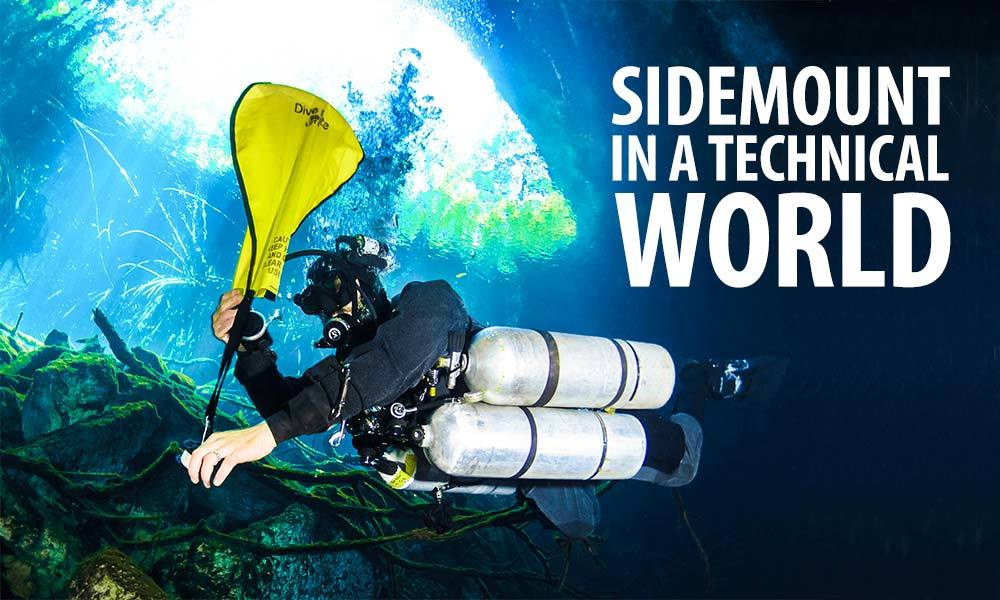Recently scrolling through the SDI and TDI sidemount articles, I noticed a distinct trend – we have posted A LOT of articles over the years about the applications of sidemount for diving outside the technical world. This got me thinking, have we forgotten where we came from and the origins of sidemount diving? Do we need a reminder of the benefits sidemount offers cave and technical divers? While many will argue sidemount diving is a trend or a fad, the fact is it is an extremely valuable tool for certain diving applications.
Yes, it can be used for a wide variety of environments, but sidemount was borne out of necessity in caves. Tight restrictions and remote locations that made backmounted doubles impractical or impossible meant a new approach needed to be taken. These tight areas add significant complexity to the dive, not only due to the struggle to physically fit through the restrictions, but also because:
- Equipment failures are more likely due to the harsh environment
- Equipment failures and gas loss become a much more serious risk due to the difficulty exiting the cave quickly
- Self sufficiency is paramount, as it is unlikely that a teammate will be able to reach you if you have a problem
This is where sidemount truly shines as an equipment configuration. Small cave passages with tight restrictions are an unforgiving place for dive equipment. Brass valves, regulator first stages, hose fittings, injection molded plastic and Delrin® regulator second stages and BCD fittings can all be easily damaged by a hard limestone cave while trying to squeeze through confined spaces. Sidemount addresses this by both allowing fragile brass and plastic equipment to be configured in a way where it is streamlined and protected from the environment, and also makes catastrophic failures more manageable.
Tank valves and first stages are often configured so they are tucked up under the diver’s armpits, shielding them from potential hazards. BCD over pressure valves (OPVs) and corrugated hose fittings can be mounted on the inside of the wing where they will not be subject to contact with the cave. Add this to the ease of removing equipment to pass through a restriction, and equipment damage in confined spaces becomes less of a concern than it would be in backmount.
However, even the highest quality equipment will fail at some point when subjected to the harshest of diving conditions. These failures become much more serious concerns in restrictive cave passages, and sidemount offers the advantage of being able to address the issue quickly with one hand in very small spaces.
Sidemount cylinders are not connected with an isolation manifold, which means that they are truly redundant gas sources. When managed correctly, this means that a diver can incur a complete and catastrophic failure in one of the cylinders, and still maintain sufficient gas to exit the cave independently if needed.
So while sidemount has evolved and can be used as an appropriate configuration for a wide variety of dives, it remains the best, if not only, configuration suitable for highly restrictive cave passages.
To find out more about International Training, visit www.tdisdi.com.













































